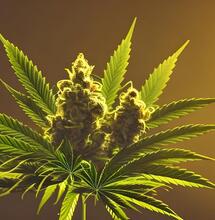.jpg)
Man, I've burned through cash on so many devices that promised the moon but delivered garbage. Five years and probably thirty different units later, here's what nobody tells you about extraction methods. No marketing BS, just what I've learned the hard way.
The Science Behind Heat Transfer and Vaporization
So heat transfer ain't just about how hot something gets. It's about HOW that heat moves through your stuff. Pure convection blows hot air around your material. Think about your oven baking cookies.
Hybrid systems add direct heat contact or infrared rays. Each way hits the plant cells totally differently. I've found convection keeps the subtle stuff intact. Hybrid methods pull more total compounds out but sometimes make everything taste kinda samey.
Real-World Performance Comparisons: Terpenes, Cannabinoids, and Total Extraction Yield
Last July I went nuts and spent three weeks testing the exact same material in different systems. Got sidetracked reading cannabis vaporizer reviews when I should've been working on this health blog thing.
The comment sections were wild - people fighting about extraction methods that honestly apply to way more than just weed. The pure convection units gave cleaner results but damn they took forever. Hybrid systems extracted more stuff total but sometimes made everything taste muddled together. This manufacturer let me visit their testing place.
They showed me these lab results that matched exactly what I was tasting: convection kept more of those tasty terpenes while hybrid pulled more total cannabinoids. Same pattern happens with coffee beans, tea leaves, all that stuff.
Temperature Control Precision for Herbal Vaporizers
Biggest real difference? Temperature stability. Pure convection keeps temps way steadier. My digital thermometer showed only tiny 2-3 degree changes in good convection systems. The hybrid ones jumped around 8-12 degrees constantly.
This matters big time because certain compounds only extract at specific temps. Too hot, you burn off the good stuff. Too cold, you leave it behind. The fancy hybrid systems try fixing this with computer chips and sensors, but physics is physics. Direct heating elements always make hot spots.
EnEnergy Efficiency Considerations: Quick Sessions vs. Long Sessions
Convection systems suck more juice at first but stay steady once hot. Hybrid systems heat up super fast but keep cycling on and off.
During my testing last winter, the convection unit used like 15% more electricity for the first five minutes but then used 23% less over a whole hour. So for quick hits, hybrid wins the power battle. For longer sessions, convection saves your electric bill.
Material Interaction Differences: Best Methods for Wet, Dry, and Dense Herbs
Different stuff needs different heating. Wet, dense materials need hybrid approaches. The direct heat burns through all that moisture. Dry, delicate stuff does way better with pure convection. Doesn't scorch it.
I ran tests on chamomile, peppermint, and lavender batches in both systems. How wet the plant was mattered way more than what kind of plant it was. Anything wetter than 15% moisture needed that aggressive hybrid heating approach.
Cleaning and Maintenance Requirements for Longevity
Nobody ever talks about cleaning these damn things. Pure convection systems have fewer parts actually touching your material, so less gunk builds up. My convection units need serious cleaning maybe half as often.
But when convection systems need fixing, it's a bigger pain. The heating elements are buried in there. Hybrid systems get nasty faster but usually you can actually reach the dirty parts to clean them.
Flavor Profile Development: Clarity vs. Intensity in Vaping
Most subjective difference is taste. Pure convection gives you cleaner, more distinct flavors. You can actually taste the different notes separately. Hybrid systems make stronger, fuller profiles but kinda mash flavors together.
I made my friends do blind taste tests using the exact same starting materials. For subtle stuff like white tea, 80% thought convection tasted better. For strong stuff like dark coffee, 65% liked hybrid better. Depends if you want clarity or intensity.
Durability and Longevity of Vaporizer Heating Elements
I've tracked a bunch of units for years now. Clear patterns. Pure convection systems last about 30-40% longer before breaking down. Their heating elements last longer since they don't directly touch materials.
But when convection systems do break, fixing them costs more. Their air systems get complicated. Hybrid units break more often but usually in ways you can actually fix yourself. If you're handy, hybrid systems probably cost less long-term even though they break more.
Adaptability to Different Materials: Choosing the Right Vaporizer for Your Needs
No single system does everything great. Pure convection rocks for fragile, aromatic stuff where preserving those volatile compounds is important. Hybrid systems crush it with dense, resinous materials that need aggressive heat.
The best setups I've found let you adjust between convection and conduction depending what you're processing. These adjustable systems are more costly up front, but they beat purchasing multiple specialized units.
Conclusion
After all this testing, I use both: convection for delicate stuff, hybrid for everything else. If you can only buy one, think about what you'll use most. This ain't marketing crap. Your heating method totally changes what compounds you pull out and how they taste. Match your heating to your material and you'll get way better results



